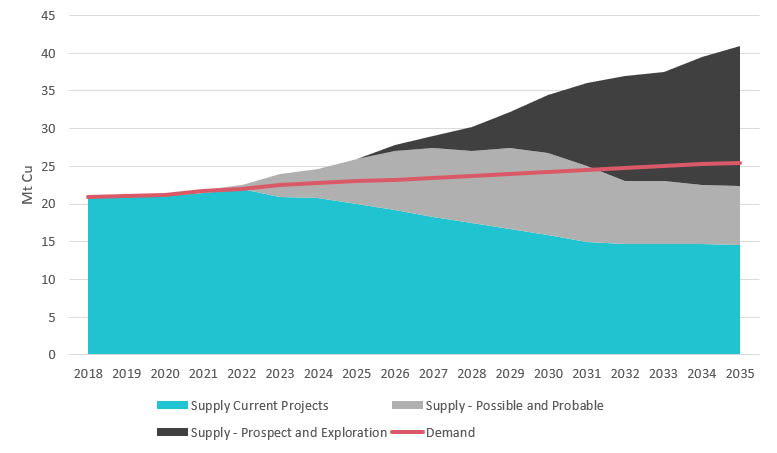Copper is of fundamental importance in a world increasingly reliant on efficient energy conduction. Copper’s highly conductive, ductile and anti-corrosive properties make it a vital component in modern economic development.
Renewable energy technologies are at the forefront of the energy revolution. Over the next several years to 2023, renewables are forecast to account for 70% of global energy generation growth. This in turn will increase their market share in electricity generation from 24% in 2017 to 30% by 2023.1 This is being driven by a shift toward low emission electricity generation and distribution and rapid advances in renewable energy capture and storage technologies.
Copper will be crucial in this transition into renewable energy, particularly in wind, solar, and storage technologies and especially in the electric vehicle industry. As this innovative market develops and grows, so does the demand in copper as it’s durability, conductivity and efficiency make it an integral element in the electric vehicle technology and supporting infrastructure. A pure battery electric vehicle alone will require approximately three times more copper than a standard conventional car. As government incentives continue to push for electric vehicles and with global EV sales up 63%2 in 2018, the demand for copper and copper products is expected to increase dramatically.3
Copper market balance and price forecast4
Copper prices trended downwards from 2010 hitting multi-year lows in 2016 as a result of a surplus in supply. Copper prices rebounded in 2017 due to significant supply disruptions but in 2019, prices fell as a reaction to the ongoing trade war between US and China. However, economic fundamentals indicate that a that a copper supply shortage is likely, which may fuel a price resurgence over the coming years. Globally, diminishing copper grades, a dwindling pipeline of new copper projects and expansions, and an expected exhaustion of key copper mines point towards a tightening supply market. Furthermore, looking at long-term copper market dynamics, demand is expected to rise due to the increasing use of the metal in new technologies and current supply is unlikely to keep pace with this growing demand.5
Figure 1: Copper Supply and Demand

References
[1] The International Energy Agency. 2018. https://www.iea.org/renewables2018/
[2] S&P Platts. 2019. https://www.spglobal.com/platts/en/market-insights/latest-news/electric-power/020519-global-ev-car-sales-surge-63-in-2018-to-top-2-million-vehicles#
[3] Visual Capitalist. 2019. https://www.visualcapitalist.com/visualizing-coppers-role-in-the-transition-to-clean-energy/
[4] Credit Suisse. 2017. https://www.credit-suisse.com/au/en.html

